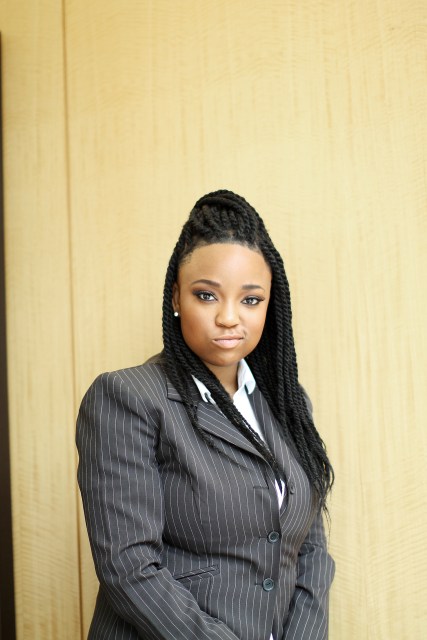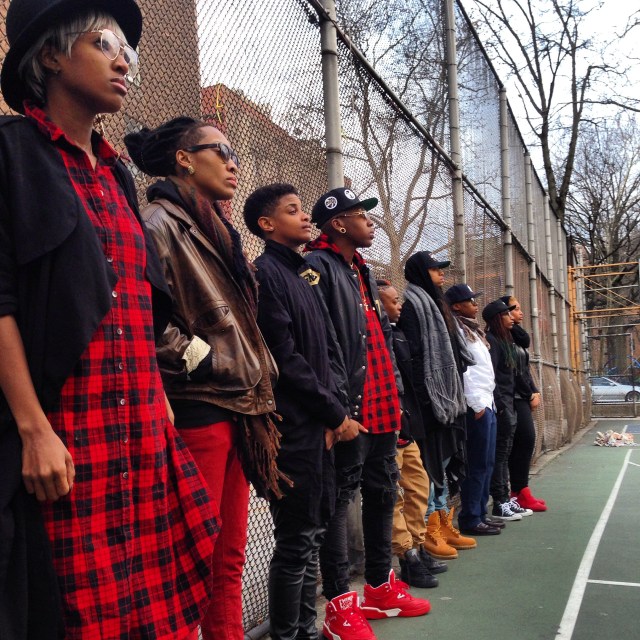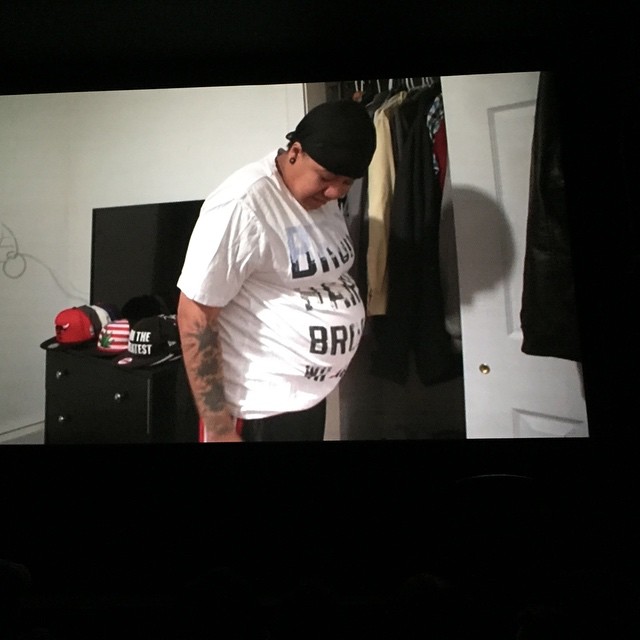There are sooo many rules to being a lesbian these days, especially if you identify as masculine of center (MOC) butch, stud, AG or dom. I also realize that I either break or unwittingly follow most of these rules. I’m accustomed to other masculine of center women calling me out for my “boi spa days” but I’ve never really sat down and asked them why my self-care was so disturbing to them. The question plagues me what does it mean to be a stud? What MAKES you a stud? What knocks you out of that community and WHO decides?
It’s an unfortunate truth that as a community, we police each other’s gender often seeking to see who is a more masculine vs feminine, who is a real stud or how exactly we should behave within gender roles. In the film The Same Difference director Nneka Onuorah takes on many of these questions as she seeks to break down the “rules” or gender stereotypes that we navigate within the black lesbian community. I had the opportunity to check out the film at this year’s Frameline Film Festival in San Francisco. If you were there I was the loud one up front yelling at every “rule” I disagreed with. From the time that the film starts with various studs lined up opposite of each other we understand that this is a film about women who identify in the same way but each embody different images of what a “stud” looks like. None of us are the same.

So what are some of these rules? Some of them listed in the movie included:
- Studs don’t wear makeup
- Studs don’t date other studs (same goes for femmes dating femmes but S4S is much worst)
- Studs don’t have long hair (pretty much every stud has a bald caeser, taper fade or locs)
- A stud can’t get pregnant (once again that’s a femme thing)
- No cross-dressing (your homebois don’t want to see you in heels)
- No flip flopping (if you are a lesbian be a lesbian, I shouldn’t be seeing you with a guy tomorrow)
So admittedly I don’t break THESE particular rules. I threw away my MAC credit card years ago and I stick religiously to my taper fade or feaux hawk. I tried to wear some heels in a butch/femme switch and apparently I’m not good at that anymore either. But I do like other “pretty” things that some may not consider especially butch like getting my eyebrows done or keeping my pedicure appointments. And what if I DID decide to have a baby to make my family whole. Would I be shunned from the community then?

The Same Difference takes the lid off of the many boxes that we as a community put ourselves into in respect to gender. Nneka recalled that she was inspired to take this journey because she had been working in television for 6 years but felt like she hadn’t really made a difference. “I wanted to tell stories that give a voice to the voiceless and give back to a community that I am a part of,” she said. The journey was also a personal one because she recalls coming of age as a young lesbian and how she learned the proper way to “be a stud.” This is a story that is familiar to me as well. It reminded me of being a young butch searching for my identify and what it meant to “look” butch. There have always been elders that took us under their wings to teach us the dos and don’ts. But do those do’s and don’ts truly help us navigate the journey or do they exist solely to self-segregate and create more tiers of discrimination within our own community?
When I left the theater the very first thing that I did was hop on Facebook to proclaim The Same Difference as the best film about black butchness that I had ever seen and I’ve seen all of them — all two of them. There has literally been only two films that give audiences the opportunities to view images of black studs/butches/AG’s/doms and talk about their experiences. The Same Difference approaches the subject in a bit of a different way. The film wasn’t initially conceived as a film about black butches. Nneka’s original concept was to simply start conversations about gender and stereotypes. She went into it openly inviting women of different ages and ethnicities to panel discussions about some of the “rules” presented. The film ultimately found its own way landing on black butchness. For a black masculine of center woman such as myself it felt perfect because it is very rare that we are represented in any form of media deconstructing gender outside of juxtaposing femmes. The goal was to allow those with different opinions about gender and stereotypes to have discussions and get to the root of these stereotypes.
In the film, a new rule appears before each segment. Each of them brought humorous responses both from the participants in the film as well as the audience mostly because NOBODY knows why these are rules! As each of the participants struggled to explain why these rules exist you begin to understand that they are just socialized norms that have been passed down over the years and we just follow them. Nor, one half of the queer rap group Kin4Life made an appearance on camera with fierce makeup beat to the Gawds (translation, very good makeup job) and described her experience as a public MOC woman who loves to wear makeup. I don’t wear makeup but I absolutely understood where she was coming from. I’v had elder butches take me to task about things they deemed “pretty” like getting my eyebrows done and wearing a regular bra as opposed to a sports bra. It was cool to hear Nor’s perspective and then hear other butches around me agree that they too have faced this type of isolation within our community. It really showed how these types of internalized discrimination were felt throughout the community. One of the strengths of the film is the audience being able to sit in on these hard conversations and ask themselves similar questions. What are we comfortable with in terms of how the person next to us performs gender? But also why do we care?
Some of the other rules that were discussed were highlighted by personal stories including a stud on stud (S4S) couple who discussed being ridiculed by their own friends about their relationship. One of the most active moments of the night came when one of their friends talked to them about her disgust of their relationship. The friend basically said studs can’t be with other studs because “that’s gay” and then the couple kissed right in front of her and she recoiled in disgust while the audience cheered and whooped. Their story was interesting because it represented an entire community that consistently faces prejudice for being “gay” and dating someone of the same gender presentation. Go Figure.

We got to meet King Kellz, a stud exotic dancer. Although Kellz has cultivated a large following of women through her performances, she has faced a huge amount of backlash from other studs because she wears a long weave. Kellz displayed a very beautiful, powerful dominance as a butch but is consistently heckled online simply because of her hair. Because obviously you can’t be a masculine presenting woman and have a weave.
A new rule that I never even considered was “studs don’t get pregnant.” We met The Pregnant Stud and I connected with her story so much because, knowing that I have never wanted to bear children, my friends often ask what would I do if my future wife wanted children but could not conceive. We find out that this is exactly the case for this couple. Unfortunately, the way that we get to know them is from the social media backlash they receive from a group of acquaintances.

In order to show the media’s hand in how we read gender, the filmmaker talks with actresses AZ Marie and Snoop Pearson about how Hollywood has treated them as dominant lesbians. This was also a good way to talk about another rule “Studs don’t flip flop.” Actresses like AZ Marie stay active in Hollywood by being able to present as both a dominant stud and a pretty femme which is obviously against the rules. We spent the most time with Snoop who gained fame as the aggressive drug runner also named Snoop on HBO’s “The Wire.” Snoop’s story veered from AZ Marie’s because so many fans have come to see her image as the ideal aggressive butch lesbian and they have been open about not agreeing with her taking more femme presenting roles. Her story is really about being able to pursue her career fearlessly and not being type casted just as an aggressive woman. Watching her learn to walk in heels was worth the admission all on its own.
Many of the participants on the film were in their late 20’s. The director really wanted to focus on young people who were still in the process of learning who they were and maturing their identity. “This film is very important to the young women coming out as lesbian,” Onuorah said. “There is this choice you are faced with when you come out, like what category to choose. I want young women to know that they don’t have to choose a place. Being exactly who they are is ok. Being confident will outshine fitting other people’s expectations of you.”
Although there were only a few elders in the film, there were actually a few present for the initial pre-film panels. “They actually apologized for creating these rules and acknowledged the negative effect they had on our community,” Onuorah said. We must remember that many of these elders came up in a time when they created rules for survival both to navigate without being harassed but also as identifiers to feel safe in their communities. Young people view butchness in a different way now. In discussing masculine identity in the way The Same Difference did, it’s about redefining beauty and how that is not limited to masculine or feminine. We are all allowed to express our beauty how we choose regardless of our gender identity.
One word that was not mentioned in the film directly but was definitely pointed to over and over again was emasculation. That term emasculation carries a lot of weight across the board in the African-American community. As a community masculinity has been viewed as something that can be taken from you by not acting in a correct way. Most of the rules in the film ultimately come down to ways groups try to isolate members of the community and make them feel that they can be pushed out if they don’t conform. As butch women we are already pushing against those norms. I push against these everyday, changing the image of what is masculine with my arched brows and my perfect feet. Part of my gender journey was learning how to ignore the rules and simply be me along the way, embracing those that love my pretty boi tendencies.
The most important takeaway from this film was that each of the featured participants are actively stretching the concept of what butch is so that young women that actually watch the film can see themselves in the community, especially if they are currently in a place where no one looks like them or expresses gender like them.
From here Nneka and The Same Difference continue on the film festival trail stopping next at Chicago’s Black Alphabet Film Festival on July 24. Her hope is to continue to gain support and ultimately secure distribution proving that the black butch community has a voice and the numbers to tell more stories. To learn more about this phenomenal film you can follow it on Instagram or on Tumblr.







